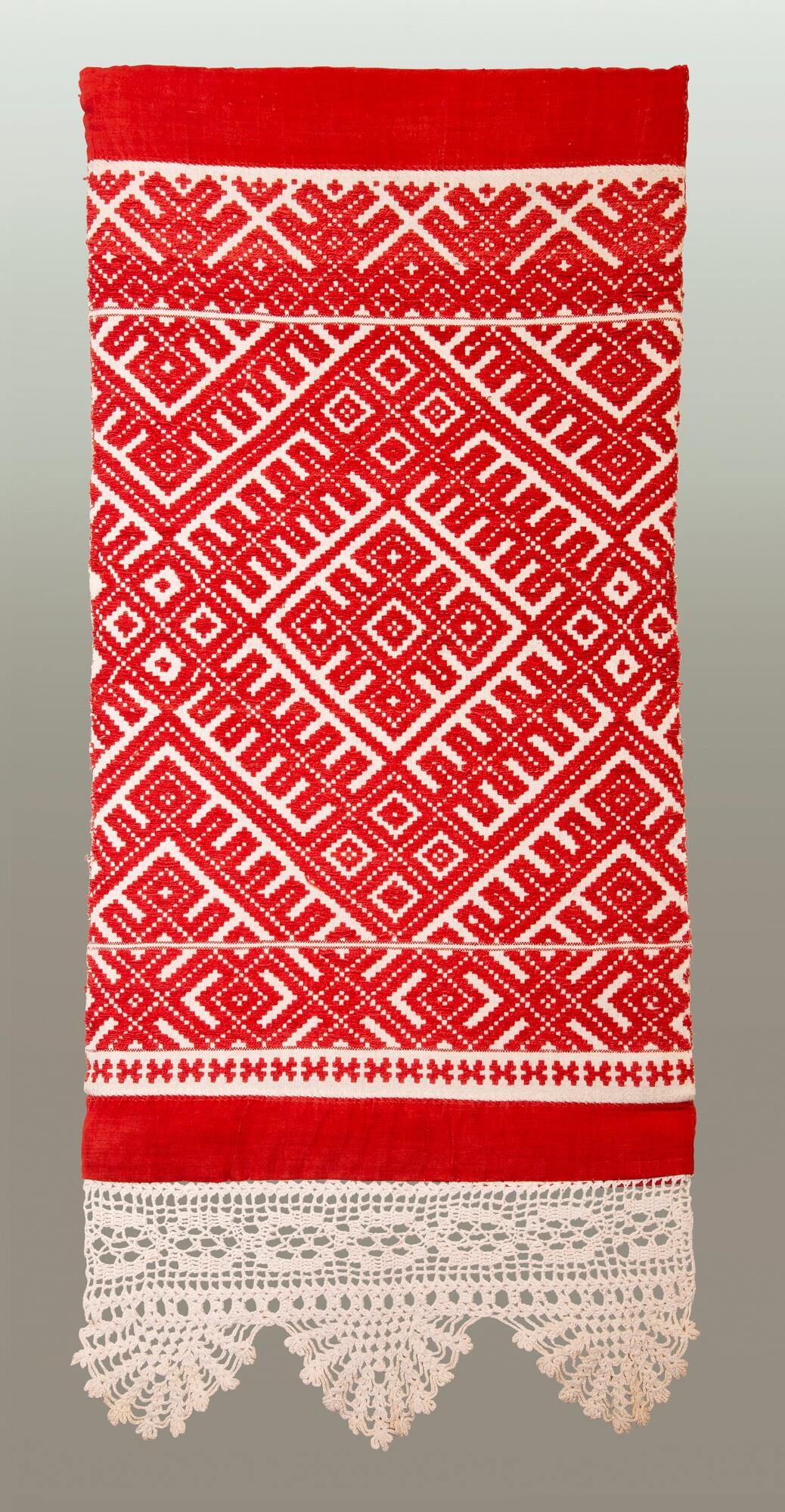The long towels from the museum’s collection stand out among the other various woven items and arrest the viewer’s attention with their clear red and white patterns. The towel is one of the most important items in Russian culture. Since ancient times, towels have been used in wedding and funeral ceremonies. They were decorated with embroidery and woven patterns, hung on the branches of sacred trees and in the red corner of the house — the most revered place with icons. Long head towels were an important part of a women’s costume. They protected women from troubles, misfortunes, and the evil eye. Patterns rendering the images of ancient mythology and pre-Christian beliefs were passed down from generation to generation.
The methods of decorating fabrics were complex and time-consuming. The weaving mill, called “krosna”, was a massive wooden structure with steps, a system of hanging blocks and other devices for different types of weaving. The pattern was created in the very process of weaving, and it was impossible to correct the slightest inaccuracy in the pattern: the threads of the background and the pattern formed one single structure. Therefore, the ability of a weaver to make complex calculations was valued as highly as her artistic taste and imagination. Not every weaver was able to prepare the loom for work properly.
The weaving technique determined the geometric nature of the ornament, which combined stripes, triangles, squares, rhombuses, and other shapes. Rhombuses were prevalent — they could be linear, with extended sides, comb-shaped, or hooked. The rhombic pattern originated in antiquity and had a deep meaning. A rhombus symbolized the sun and the sown field. The magical meaning of the figures gradually changed, and the pattern was enriched with new motifs. Nevertheless, the ancient elements remained unchanged and were preserved mainly on ritual objects.
This towel was created by a talented craftswoman in the village of Semenovskaya, Kargopol District, Olonets Governorate. Each end of the towel features a pattern — a slender composition about one meter wide. The large rhombic pattern is continuous. It attracts with the classical rigor of the linear pattern, completeness and balance of the composition.
The methods of decorating fabrics were complex and time-consuming. The weaving mill, called “krosna”, was a massive wooden structure with steps, a system of hanging blocks and other devices for different types of weaving. The pattern was created in the very process of weaving, and it was impossible to correct the slightest inaccuracy in the pattern: the threads of the background and the pattern formed one single structure. Therefore, the ability of a weaver to make complex calculations was valued as highly as her artistic taste and imagination. Not every weaver was able to prepare the loom for work properly.
The weaving technique determined the geometric nature of the ornament, which combined stripes, triangles, squares, rhombuses, and other shapes. Rhombuses were prevalent — they could be linear, with extended sides, comb-shaped, or hooked. The rhombic pattern originated in antiquity and had a deep meaning. A rhombus symbolized the sun and the sown field. The magical meaning of the figures gradually changed, and the pattern was enriched with new motifs. Nevertheless, the ancient elements remained unchanged and were preserved mainly on ritual objects.
This towel was created by a talented craftswoman in the village of Semenovskaya, Kargopol District, Olonets Governorate. Each end of the towel features a pattern — a slender composition about one meter wide. The large rhombic pattern is continuous. It attracts with the classical rigor of the linear pattern, completeness and balance of the composition.


